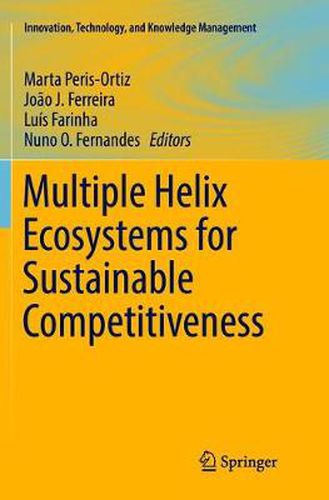Readings Newsletter
Become a Readings Member to make your shopping experience even easier.
Sign in or sign up for free!
You’re not far away from qualifying for FREE standard shipping within Australia
You’ve qualified for FREE standard shipping within Australia
The cart is loading…






This title is printed to order. This book may have been self-published. If so, we cannot guarantee the quality of the content. In the main most books will have gone through the editing process however some may not. We therefore suggest that you be aware of this before ordering this book. If in doubt check either the author or publisher’s details as we are unable to accept any returns unless they are faulty. Please contact us if you have any questions.
This book discusses the main issues, challenges, opportunities, and trends involving the interactions between academia, industry, government and society. Specifically, it aims to explore how these interactions enhance the ways in which companies deliver products and services in order to achieve sustainable competitiveness in the marketplace.
Sustainable competitiveness has been widely discussed by academics and practitioners, considering the importance of protecting the environment while sustaining the economic goals of organizations. The Quintuple Helix innovation model is a framework for facilitating knowledge, innovation and sustainable competitive advantage. It embeds the Triple and the Quadruple Helix models by adding a fifth helix, the natural environment. The Triple Helix model focuses on the university-industry-government triad, while the Quadruple adds civil society (the media- and culture-driven public) as a fourth helix.
The Quintuple Helix model facilitates research, public policy, and practical application of sustainable competitiveness principles. Applying the most recent developments and theoretical insights of this model, the contributors to this volume address such questions as: how do government, academia, industry and civil society actors interact for promoting sustainable competitiveness at the country (regional) level? How do these actors influence sustainable operations management at the company (business) level? In so doing, they shed new light on the dynamics of economic growth, sustainability and competitiveness.
$9.00 standard shipping within Australia
FREE standard shipping within Australia for orders over $100.00
Express & International shipping calculated at checkout
This title is printed to order. This book may have been self-published. If so, we cannot guarantee the quality of the content. In the main most books will have gone through the editing process however some may not. We therefore suggest that you be aware of this before ordering this book. If in doubt check either the author or publisher’s details as we are unable to accept any returns unless they are faulty. Please contact us if you have any questions.
This book discusses the main issues, challenges, opportunities, and trends involving the interactions between academia, industry, government and society. Specifically, it aims to explore how these interactions enhance the ways in which companies deliver products and services in order to achieve sustainable competitiveness in the marketplace.
Sustainable competitiveness has been widely discussed by academics and practitioners, considering the importance of protecting the environment while sustaining the economic goals of organizations. The Quintuple Helix innovation model is a framework for facilitating knowledge, innovation and sustainable competitive advantage. It embeds the Triple and the Quadruple Helix models by adding a fifth helix, the natural environment. The Triple Helix model focuses on the university-industry-government triad, while the Quadruple adds civil society (the media- and culture-driven public) as a fourth helix.
The Quintuple Helix model facilitates research, public policy, and practical application of sustainable competitiveness principles. Applying the most recent developments and theoretical insights of this model, the contributors to this volume address such questions as: how do government, academia, industry and civil society actors interact for promoting sustainable competitiveness at the country (regional) level? How do these actors influence sustainable operations management at the company (business) level? In so doing, they shed new light on the dynamics of economic growth, sustainability and competitiveness.